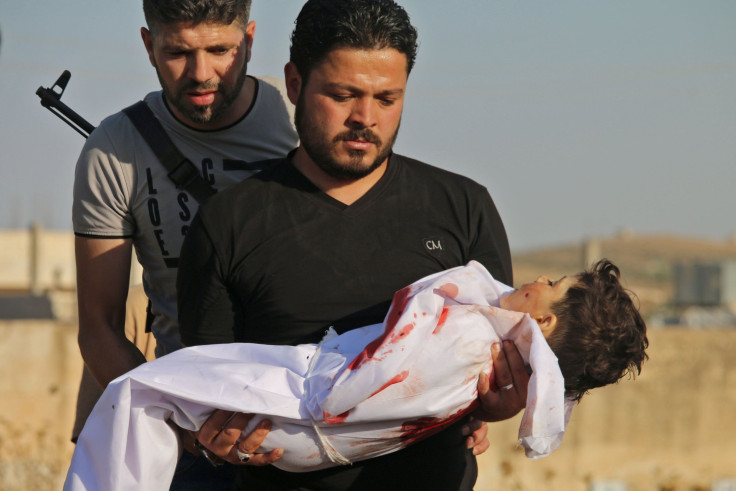ISIS Violence In Syria Threatens More Than 40,000 Children, UNICEF Says

More than 40,000 children are in imminent danger as a result of the Islamic State’s fighting in Raqqa, Syria. UNICEF, the United Nations’ agency for children’s rights, announced Friday that the continuous violence displaced massive numbers of residents, including 80,000 children who were moved to temporary camps and shelters.
“An estimated 40,000 children remain trapped in extremely dangerous conditions in Raqqa,” said UNICEF’s regional director Geert Cappelaera in a press release Friday. “Many are caught in the crossfire.”
Read: Healthcare Access Limited, Few Doctors Left In Syria On Sixth Anniversary Of War
Fighting in the northern city has escalated as the United States-backed Syrian Democratic Forces attacked the ISIS stronghold earlier in the week. Since then, the U.S.-led coalition has continued airstrikes on the region.

UNICEF reported at least 25 children had been killed and untold more injured in the recent violence.
“Children are being deprived of the most basic and life-saving necessities,” UNICEF’s report said. “Little aid has reached Ar-Raqqa since 2013 due to violence and access restriction.
Entering its sixth consecutive year of war, conditions in Syria continued to deteriorate rapidly. Nearly five million people, including two million children, live in hard to reach areas in Syria where getting medical attention remained nearly impossible, according to the World Health Organization.
“Hospitals and schools have reportedly come under attack,” UNICEF's report said. “Those attempting to flee are at the danger of getting killed or injured.”
The World Health Organization announced in March that more than half of the country’s hospitals and health centers had closed or were functioning at a limited capacity due to the violence, while almost two-thirds of the region’s healthcare workers had fled. The handful of centers that remained open were barely operational, lacking essentials like clean water, electricity and basic medicines.
“On this sad anniversary of the start of the war in Syria and before more lives are lost, WHO calls for systemic and unhindered access to all areas to deliver lifesaving medicines, vaccines and medical supplies,” Dr. Peter Salma, executive director of WHO’s Health Emergencies Program, said in a March press release on the anniversary of the start of the Syrian war.
Read: Bernie Sanders Slams Trump’s Airstrikes On Syria
The international aid charity Doctors Without Borders begged for access to the Syrian city of Aleppo in October after continuous bombings left not a single hospital in the city undamaged. At least 23 attacks on the eight standing hospitals took place during a month-long siege. At the end, only seven doctors remained in the city of 25,000.
“People are literally dying on the floors of the facilities,” Doctors Without Borders said in an October press release. “We must not let 2017 repeat the tragedies of 2016 for Syria.”

© Copyright IBTimes 2025. All rights reserved.






















